Sustainability at Fritschi

Sustainably designed and manufactured
Sustainability has always been an integral part of Fritschi's corporate culture and accompanies the work of the entire team every day. The careful use of resources begins at the design stage. The construction and choice of materials are designed to last. The individual parts are manufactured in Switzerland using environmentally friendly high-tech plastics and high-quality metals. After assembly in Reichenbach, the quality products are packaged in recyclable boxes, also made in Switzerland.

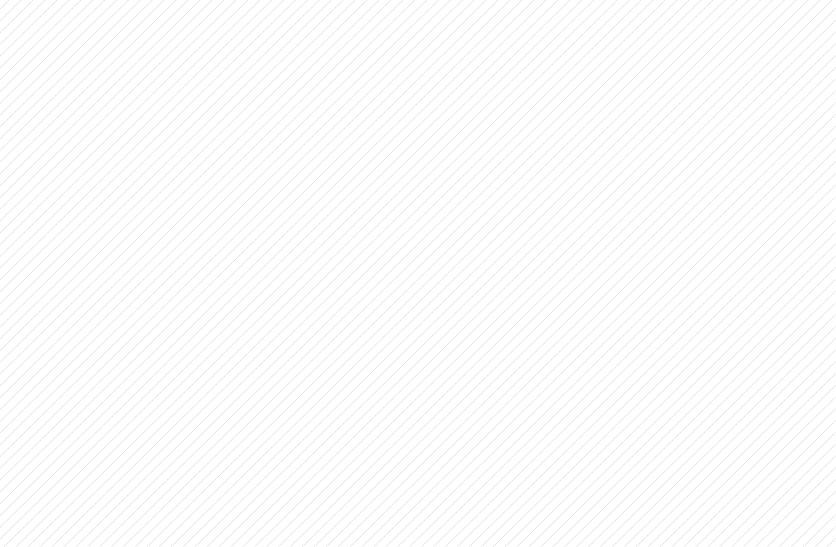
Fritschi is a small but not unknown manufacturer from the Bernese Oberland. Its speciality: ski bindings - touring bindings to be precise. Touring bindings made in Switzerland, to be precise. For 60 years now, Fritschi has been providing touring enthusiasts with new innovations that make them the ideal companions on every ski tour. The range extends from classic touring bindings to freeride bindings with optimal power transmission. In addition to innovation, Fritschi stands for safety, functionality and Swiss quality.
The friendly Swiss company has set itself the task of making its passion, ski touring in the alpine mountains, a perfect experience with high-tech ski touring bindings. The well-rehearsed team of engineers and technicians work every day with passion and attention to detail to find the best technical solutions. This is how new, unique products are created.
From concept to product
Fritschi has a few special features. On the one hand, it is one of the few companies that specialises exclusively in the production of ski bindings. On the other hand, almost 100% of the value added takes place in Switzerland, while 85% of the production is exported. The suppliers of components and packaging are also Swiss. From planning to production to sales, we rely on "Made in Switzerland". Swiss engineering also includes the special testing procedures to which the individual high-tech components and finished bindings are subjected. Naturally, the bindings are TÜV tested and certified. No binding leaves the assembly hall without first being tested for safety and function on a special testing machine.

All Fritschi bindings have one thing in common, from lightweight pin bindings to the tried and tested jaw bindings: their independent technology meets the highest standards of safety, functionality and quality, and they all have a unique and attractive appearance. Whether for leisurely or challenging ski touring in alpine or high alpine terrain, whether with a focus on ease or downhill, Fritschi has the right binding. The widths of the ski stops and crampons are perfectly matched to the wide range of touring skis. The colour of the exclusively designed bindings can also be matched to the ski, thanks to the colour clips.
Models such as Fritschi Tecton, Vipec Evo, Eagle and Scout have long been classics in the touring and freeride scene. These bindings have stood for "Made in Switzerland" quality for many years and have repeatedly proven their particular suitability for these complex requirements. Low weight and comfort on the ascent are just as important as stability and release security on the descent. It is a balancing act that these models master in a unique way, giving tourers and freeriders a feeling of safety and freedom in equal measure. Fritschi underlines its claim as a binding expert with a matching range of stoppers and crampons (Axion and Traxion). Tourers and freeriders alike will find the right equipment for maximum comfort and safety.


Fritschi Swiss Bindings is synonymous with sustainability. Because they too are aware of the need to preserve the Alps and all that goes with them in all their beauty. A holistic sustainability strategy is implemented within the company itself. All elements of the company are considered and included, be it the product itself, the employees or the partners with whom Fritschi Swiss Bindings works.
THE EMPLOYEES
Fritschi attaches great importance to providing a pleasant working environment for its employees. Particular attention is paid to the health and well-being of each individual. Fritschi currently employs 35 people, all of whom are important and contribute to the company's success.
"We stand for equality and inclusion. That's why it's a matter of course for us to reintegrate people with disabilities into the world of work".
INNOVATIVE PRODUCTS
The company's mission is to exceed all expectations by producing the lightest ski touring bindings, with no limits on performance and safety, to fully meet the needs and requirements of the market. Fritischi Swiss Bindings focuses on durability, repairability and the most intelligent packaging possible. Production in Switzerland avoids long transport routes. This is also part of Fritischi's sustainability strategy.
THE PARTNERS
Fritschi cultivates long-term partnerships and places great importance on sustainable solutions.
"We are located in a UNESCO World Heritage Site. "Sustainable commitment and cooperation with the Jungfrau-Aletsch Swiss Alps UNESCO World Heritage Site is therefore very important to us.”

- - 31 %
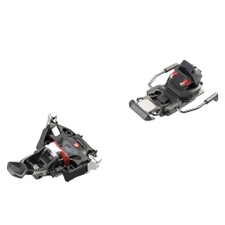 FritschiXenic 10 incl. Stoppers Alpine Touring Bindings Black / RedMSRP 449,95 €309,00 €Available Sizes:8595105
FritschiXenic 10 incl. Stoppers Alpine Touring Bindings Black / RedMSRP 449,95 €309,00 €Available Sizes:8595105
- - 23 %
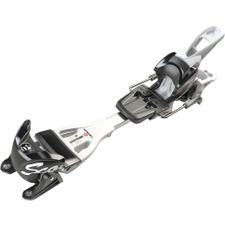 FritschiScout 11 inkl. 90 mm Stoppers Alpine Touring Bindings BlackMSRP 349,95 €269,00 €Available Sizes:SMXL
FritschiScout 11 inkl. 90 mm Stoppers Alpine Touring Bindings BlackMSRP 349,95 €269,00 €Available Sizes:SMXL
- - 27 %
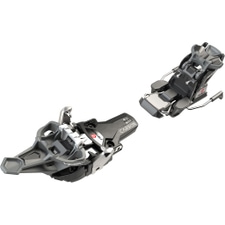 FritschiVipec EVO 12 incl. Stoppers Alpine Touring Bindings Schwarz / WeißMSRP 549,95 €399,00 €Available Sizes:8090100110
FritschiVipec EVO 12 incl. Stoppers Alpine Touring Bindings Schwarz / WeißMSRP 549,95 €399,00 €Available Sizes:8090100110 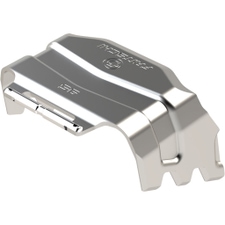 FritschiXenic Crampons Metallic74,95 €Available Sizes:8595105
FritschiXenic Crampons Metallic74,95 €Available Sizes:8595105
- - 25 %
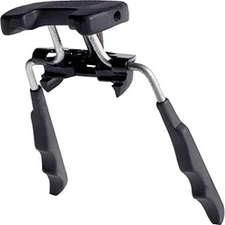 FritschiEagle / Scout / Freeride Stoppers Metallic-blackMSRP 59,95 €44,95 €Available Sizes:90100115
FritschiEagle / Scout / Freeride Stoppers Metallic-blackMSRP 59,95 €44,95 €Available Sizes:90100115


Fritschi Ambassador Lisa Horst
Lisa is a tireless sportswoman who is always out and about in the great outdoors. She enjoys climbing, cycling, mountaineering, hiking, paragliding and many other outdoor sports in the summer. The main thing is that she can be outside. In her free time, she is less interested in structured processes such as sticking to a fixed training schedule.
"I prefer to be out and about."
But her teaching career is all the more organised and structured.
EXPERIENCE COMES FIRST
Lisa doesn't want to commit to one sport and wants to be as flexible as possible in her free time. Why is that? To keep as many options open as possible and to be able to enjoy unique experiences in nature, depending on the weather. In both summer and winter, you can find her on her sporting adventures mainly in the Allgäu and Tyrol regions. The focus of her activities is a unique experience with good friends; she has never really been interested in performance-oriented things.
"What could be better than being in the mountains with friends?
NO THANKS TO COMPETITIVE SPORTS
Like many others, Lisa owes her technical foundation to ski racing. She raced as a teenager and was on the verge of becoming a competitive skier. But she was never really fast, and time was of secondary importance to her. She was more interested in finishing each race as technically perfect as possible. She found the technical training much more fun than the competitions, which she found rather unpleasant. "For me, the beauty of skiing technique and the flow of movement were always in the foreground.

Lisa's Instagram handle: _skiing_lis_
ANOTHER WORLD
At the age of 18, after a year in Whistler, Canada, she finally turned her back on ski racing. The freeride scene and the people there immediately captivated Lisa. She discovered her passion for moving off poles in open terrain. It also showed Lisa what was really important to her: not racing against each other, but with each other.
"Racing together is much more fulfilling than racing against each other."
In general, Lisa finds the exchange with different cultures and their people enriching, because she learns something new every time. Travelling together also helps her to improve her skiing skills, especially when she is travelling with people who are better skiers than she is. This impression was reinforced when Lisa took part in another competition, a Freeride Qualifier tour stop at Hochfügen. She went into the competition with no information or preparation. Despite this, she qualified third overall for the World Tour stop the next day. It was there that she finally realised that competitions, in whatever discipline, even without poles, were not for her. She only likes to take part in non-judgmental, fun events where the focus is on the shared experience.
PREPARING FOR THE WINTER
Does Lisa prepare for the winter in a structured way? "Yes. Although she doesn't stick to a training plan, she makes sure she's always moving. She looks for the right mix of sports that will ultimately help her achieve her training goals and prevent injuries, such as cycling and hiking for endurance and climbing for strength. This mix seems to be working, as Lisa has never had a serious skiing accident with broken bones, torn muscles or the like. She is also starting to ski later these days. This means that she is not on the glacier in October, but well prepared in December, when there is usually enough snow.
"With the right mix of outdoor sports, you can save yourself the trouble of going to the gym.

THE SKIING TECHNIQUE
Lisa's lack of injuries to date is certainly due to her constant need for exercise, but it is also due to her skiing skills. In addition, Lisa no longer participates in competitive sports and does not take any particular risks.
"I have never had an injury."
Lisa got her technical base from ski racing. However, her father encouraged her to train as a ski instructor, as he had once done. This training to become a state ski instructor and later a ski guide gave her skiing technique another significant boost. These courses focused on good skiing and this focus was more important than anything else to Lisa during her active ski racing days. She completed her first ski instructor training in 2009 while studying sports in Innsbruck and was even part of the DSLV Ski-Alpin instructor team from 2012-2019. Lisa then went on to study to become a teacher and missed out on regular skiing for two years, partly because she didn't have much time for it and partly because she was studying in the north of Bavaria. After completing her studies, she was able to pursue her passion for skiing while working full-time as a teacher. This led to her training as a ski guide in 2021.
THE FUTURE
Lisa is generally happy with her current situation. She works 80 per cent of the time as a teacher and the rest of the time she has enough freedom to train outside. In the winter she works as a ski guide with guests, but also for freeride and ski tour operators. Sports brands and retailers also rely on her expertise, combined with her friendly, uncomplicated manner and charisma. Lisa would like to continue working as a teacher and guide for as long as possible. "Half a year off in Norway would be something". But she still has dreams, such as a six-month break in Norway. In the winter, of course, to go ski touring, but also to devote more time to skiing in general. Lisa also loves to ski telemark, but has not had the time to do so in recent years. She would love to go back to Canada, but the distance puts her off. Also the fact that the European Alps have so much to offer.








